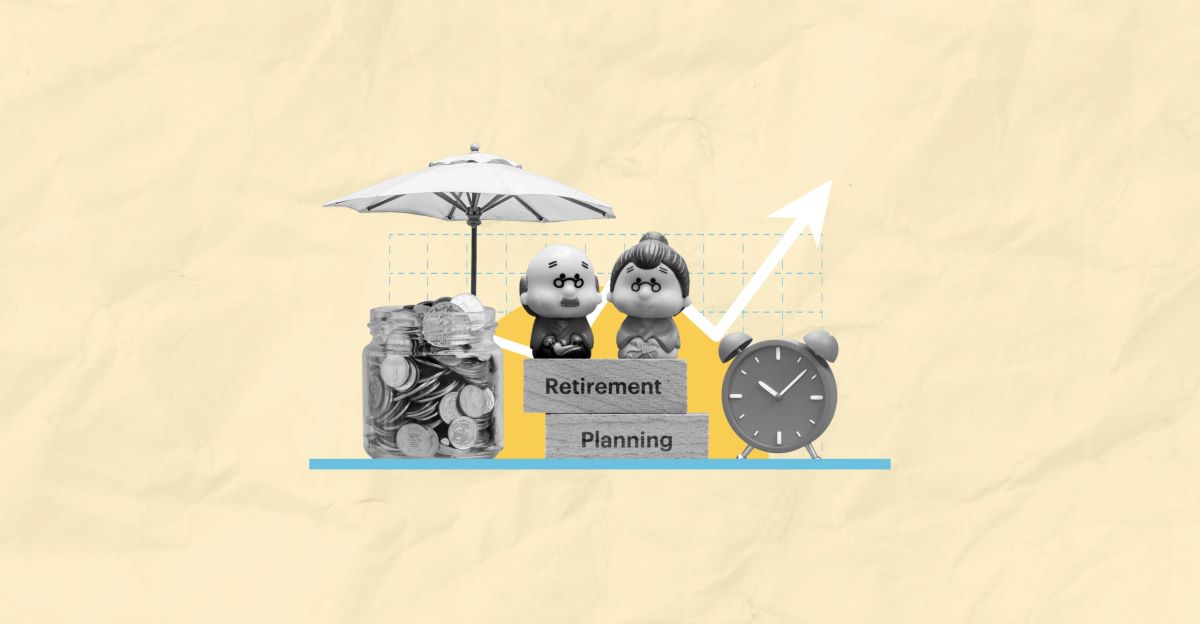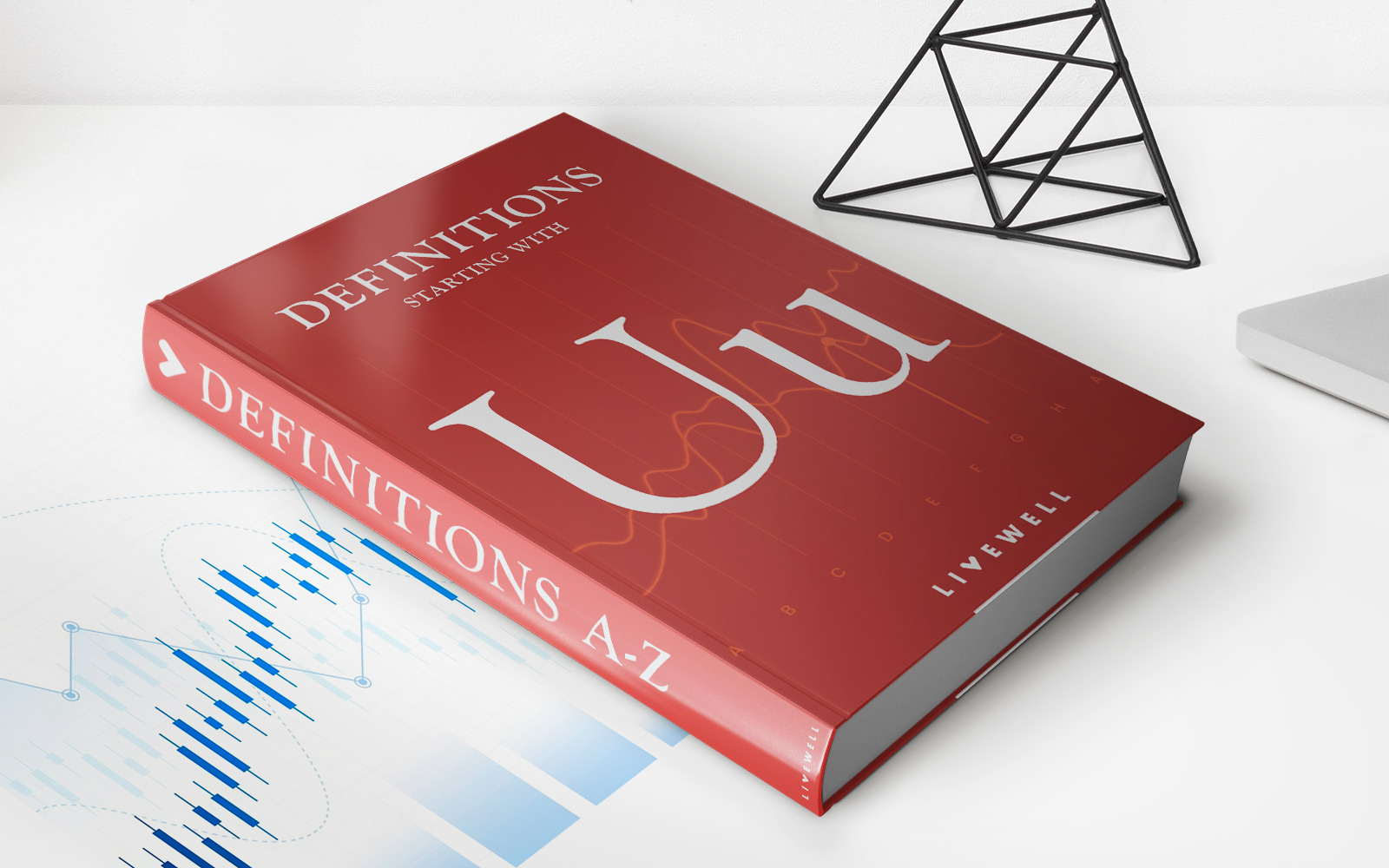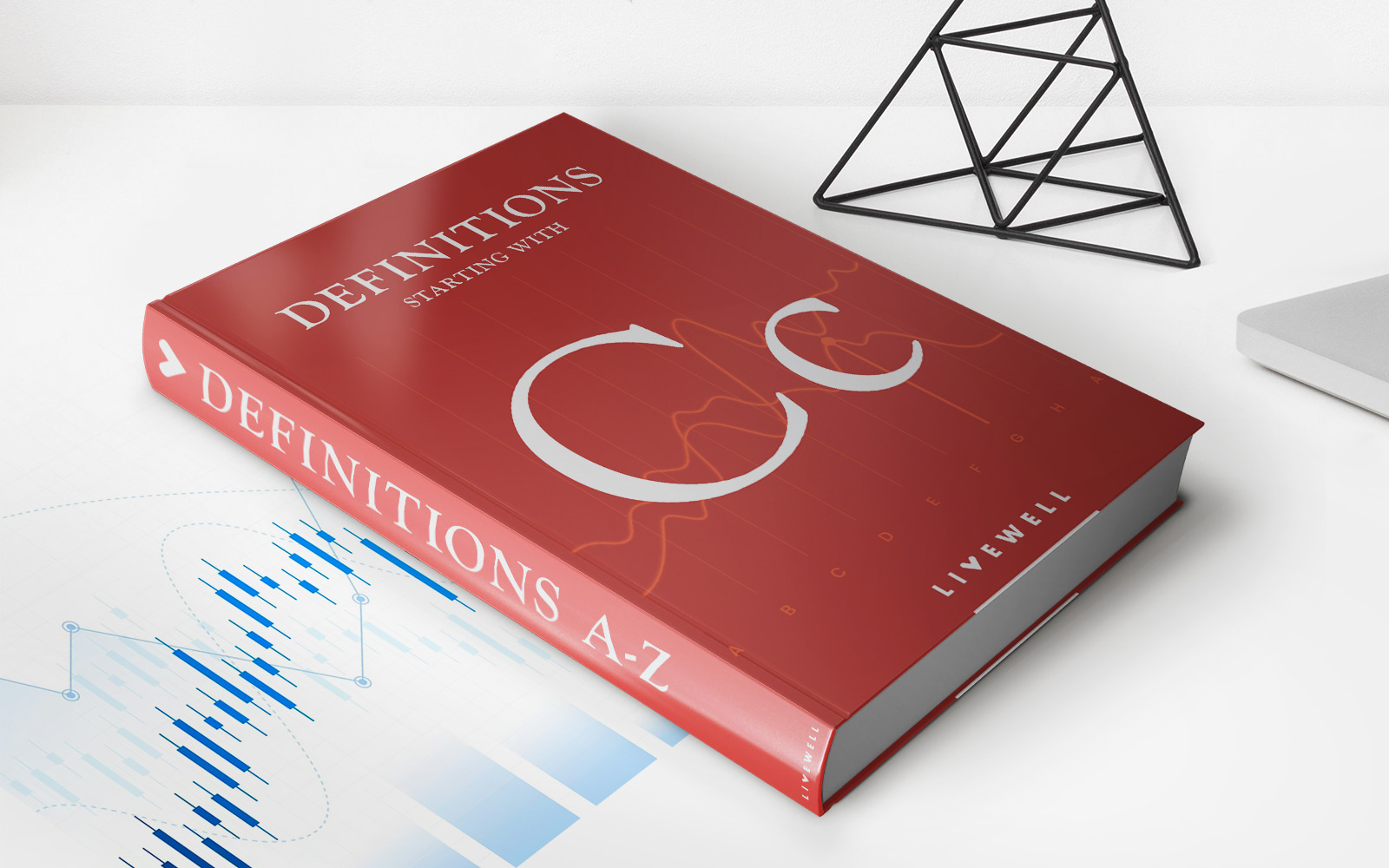Home>Finance>Tax Planning: Why You Shouldn’t Retire Without It


Finance
Tax Planning: Why You Shouldn’t Retire Without It
Modified: February 21, 2024
Ensure a secure financial future with tax planning. Discover why retiring without proper finance management can be risky. Learn the importance of tax planning today.
(Many of the links in this article redirect to a specific reviewed product. Your purchase of these products through affiliate links helps to generate commission for LiveWell, at no extra cost. Learn more)
Table of Contents
- Introduction
- What is Tax Planning?
- The Importance of Tax Planning in Retirement
- Maximizing Retirement Savings through Tax Planning
- Strategies for Minimizing Tax Liability in Retirement
- Utilizing Retirement Accounts for Tax Planning
- Taking Advantage of Tax-Deferred Investment Options
- Tax Planning for Social Security Benefits
- Estate Planning and Tax Efficiency in Retirement
- Working with a Tax Professional for Retirement Planning
- Conclusion
Introduction
Retirement is a milestone that many people dream of. It’s a time to relax, travel, and enjoy the fruits of one’s labor. However, what many individuals fail to consider is the impact of taxes on their retirement income. This is where tax planning becomes essential.
Tax planning is the process of structuring your finances and making strategic decisions to minimize your tax liability. While it is important at any stage of life, it becomes even more crucial in retirement when your income is likely to be lower and every dollar counts.
In this article, we will delve into the significance of tax planning in retirement and explore various strategies that can help you maximize your retirement savings and minimize your tax burden. From utilizing tax-advantaged retirement accounts to optimizing Social Security benefits, we will cover key techniques that can enhance your financial well-being in retirement.
Understanding and implementing effective tax planning strategies can make a significant difference in your post-retirement finances, allowing you to keep more of your hard-earned money for the things you truly value. So, let’s dive into this rewarding journey of tax planning for retirement.
What is Tax Planning?
Tax planning is a proactive approach to managing your finances in a way that minimizes your tax liability while remaining compliant with the tax laws and regulations. It involves making strategic decisions throughout the year to optimize your financial situation and reduce the amount of taxes you owe.
At its core, tax planning aims to take advantage of various tax deductions, credits, exemptions, and other incentives provided by the government to help individuals and businesses reduce their tax burden. It involves careful analysis and consideration of your income, investments, expenses, and other financial factors to identify opportunities for tax savings.
Effective tax planning requires a thorough understanding of the tax code and staying up-to-date with any changes or updates. It involves evaluating different tax strategies and choosing the ones that align with your specific financial goals and circumstances.
While tax planning is important for everyone, it becomes particularly crucial during retirement. As your income shifts from employment earnings to retirement savings, pensions, or investments, there are unique opportunities and considerations to optimize your tax situation in retirement.
By strategically planning your taxes, you can potentially reduce the amount of taxes owed, increase your after-tax income, and preserve your retirement savings for the long term. It allows you to make the most of your financial resources and maintain a comfortable lifestyle throughout your retirement years.
Ultimately, tax planning is about being proactive and taking control of your financial future. By understanding the various tax implications and incorporating tax strategies into your retirement plans, you can achieve greater financial stability and peace of mind in your golden years.
The Importance of Tax Planning in Retirement
When it comes to retirement, tax planning plays a vital role in ensuring financial security and maximizing your retirement savings. Here are several reasons why tax planning is crucial during this phase of life:
1. Minimizing Tax Liability: By engaging in effective tax planning, you can minimize the amount of taxes you owe in retirement. This means more money in your pocket to cover your living expenses and enjoy your retirement lifestyle.
2. Preserving Your Retirement Savings: Retirement savings are hard-earned and deserve protection. Through tax planning, you can structure your withdrawals from retirement accounts in a way that minimizes tax consequences, preserving your savings for the long term.
3. Creating Cash Flow: Tax planning enables you to create a tax-efficient cash flow strategy in retirement. By strategically timing withdrawals from different accounts and considering the tax implications of various income sources, you can ensure a steady stream of income while minimizing the tax impact.
4. Maximizing Social Security Benefits: Social Security benefits are a significant source of income for many retirees. However, they can be subject to taxes if certain thresholds are exceeded. Tax planning can help optimize your Social Security benefits by minimizing the tax impact on those payments.
5. Optimizing Healthcare Costs: Healthcare expenses can be a major drain on retirement savings. Tax planning can help you navigate the complexities of healthcare-related tax deductions, credits, and retirement account options to offset these costs, maximizing your savings.
6. Managing Required Minimum Distributions (RMDs): Once you reach a certain age, typically 72 for most retirement accounts, you are required to take annual distributions from your retirement accounts. Failure to comply with these RMD rules can result in hefty penalties. Tax planning can help you manage and optimize these distributions to minimize the tax impact.
7. Legacy and Estate Planning: Tax planning is a crucial aspect of estate planning, ensuring that your wealth is transferred efficiently and tax-effectively to your heirs. By considering tax implications, you can minimize estate taxes and leave a lasting legacy for your loved ones.
In summary, tax planning in retirement is essential for minimizing tax liability, preserving retirement savings, creating cash flow, maximizing Social Security benefits, managing healthcare costs, dealing with required minimum distributions, and optimizing your estate plan. By proactively planning for taxes, you can secure your financial future and enjoy a comfortable retirement lifestyle.
Maximizing Retirement Savings through Tax Planning
When it comes to retirement savings, tax planning can play a significant role in maximizing your financial resources. By utilizing strategic tax planning strategies, you can optimize your savings and potentially increase your after-tax income. Here are some key tactics to consider:
1. Contribute to Retirement Accounts: Take advantage of tax-advantaged retirement accounts such as 401(k)s, IRAs, and Roth IRAs. These accounts offer tax benefits, such as tax-deductible contributions or tax-free growth, allowing your savings to grow more efficiently.
2. Maximize Contributions: Contribute the maximum allowed amount to your retirement accounts each year. This not only helps you save more for retirement but also reduces your taxable income, potentially lowering your tax liability.
3. Consider Catch-Up Contributions: If you’re 50 years or older, take advantage of catch-up contributions, which allow you to contribute additional funds to your retirement accounts. These contributions can provide extra tax advantages and help you bolster your savings in the years leading up to retirement.
4. Strategically Time Retirement Account Withdrawals: When it’s time to start withdrawing from your retirement accounts, carefully plan the timing and amount of these withdrawals. By managing your distributions strategically, you can potentially minimize the tax impact and ensure a steady income stream.
5. Utilize Roth Conversions: If you have a traditional IRA, consider converting it into a Roth IRA. Although you’ll have to pay taxes on the converted amount, future withdrawals from a Roth IRA are tax-free, providing significant tax advantages in retirement.
6. Harvest Tax Losses: Tax-loss harvesting involves selling investments that have experienced losses to offset capital gains and reduce your tax liability. This strategy can be particularly beneficial in retirement when you may have more control over your investment portfolio.
7. Optimize Taxable and Tax-Advantaged Investments: Understand the tax implications of different types of investments. Some investments, such as municipal bonds, may offer tax advantages. Consider allocating your assets in a way that balances taxable and tax-advantaged investments to optimize your tax situation.
8. Coordinate with Other Income Sources: If you have multiple sources of retirement income, such as pensions or rental properties, coordinate these income streams to minimize your overall tax liability. Strategic planning can help you avoid jumping into higher tax brackets and maximize your after-tax income.
Remember, tax laws and regulations can change over time, so it’s important to stay informed and consult with a tax professional or financial advisor to ensure you’re utilizing the most effective tax planning strategies for your specific situation.
By maximizing your retirement savings through tax planning, you can build a more robust nest egg and enjoy a more financially secure retirement. Taking the time to strategically plan your taxes can make a significant difference in your overall financial well-being.
Strategies for Minimizing Tax Liability in Retirement
As you transition into retirement, minimizing your tax liability becomes crucial to maximize your after-tax income and preserve your financial resources. Here are some effective strategies to consider for reducing your tax burden during retirement:
1. Control Your Tax Bracket: Understand the tax brackets and thresholds that apply to your income. By managing your withdrawals from various retirement accounts strategically, you can avoid jumping into higher tax brackets and minimize your overall tax liability.
2. Utilize Tax-efficient Withdrawal Strategies: Implementing withdrawal strategies such as the “bucket approach” or “tax diversification” can help optimize your tax situation. These strategies involve strategically withdrawing from different types of accounts (taxable, tax-deferred, and tax-free) based on the tax implications of each.
3. Consider Roth IRA Conversions: Converting traditional IRAs to Roth IRAs can be a smart move if you expect your tax rates to increase in the future. Although you’ll pay taxes on the converted amount, future withdrawals from a Roth IRA will be tax-free, providing long-term tax advantages.
4. Manage Required Minimum Distributions (RMDs): Once you reach the age of 72, you are required to take annual distributions from tax-deferred retirement accounts (excluding Roth IRAs). Failing to take RMDs can result in steep penalties. Plan your RMDs in advance to avoid unnecessary tax burdens or potential tax penalties.
5. Optimize Charitable Contributions: Consider donating to charitable causes to reduce your taxable income. By itemizing deductions, you can potentially lower your tax liability while supporting organizations you care about.
6. Take Advantage of Tax Credits and Deductions: Explore all available tax credits and deductions that apply to your situation. Examples include the earned income tax credit, the child and dependent care credit, and deductions for medical expenses or mortgage interest. These can help reduce your taxable income and lower your overall tax bill.
7. Hold Investments for the Long Term: By holding investments for more than one year, you can potentially benefit from long-term capital gains rates, which are typically lower than short-term rates. This strategy can help minimize the amount of taxes owed when you decide to sell investments in retirement.
8. Be Mindful of State Taxes: Taxes can vary significantly from state to state. Consider relocating to states with lower or no income tax if it aligns with your retirement goals. Be aware of the potential tax implications if you plan to move during retirement.
9. Review Health Savings Accounts (HSAs): If you have a high-deductible health insurance plan, contribute to an HSA. Contributions are tax-deductible, and withdrawals for qualified medical expenses are tax-free, providing a triple-tax advantage.
Remember, tax planning in retirement is a dynamic process that requires ongoing review and adjustments. Tax laws may change, and your financial circumstances may evolve over time. Working with a tax professional or financial advisor can help ensure you’re making the best tax decisions for your retirement goals.
By implementing these strategies, you can effectively minimize your tax liability, optimize your after-tax income, and enjoy a more financially secure retirement.
Utilizing Retirement Accounts for Tax Planning
Retirement accounts offer valuable tax advantages that can significantly impact your overall tax planning strategy. Here are key ways to optimize your tax situation by utilizing different types of retirement accounts:
1. Traditional 401(k) and Traditional IRAs: Contributions to traditional 401(k) plans and IRAs are typically tax-deductible, reducing your taxable income in the year of contribution. This reduces your current tax liability and allows your retirement savings to grow tax-deferred until withdrawal.
2. Roth 401(k) and Roth IRAs: Contributions to Roth 401(k) plans and Roth IRAs are made with after-tax dollars, meaning you don’t receive an immediate tax deduction. However, qualified withdrawals in retirement are tax-free. Roth accounts provide tax diversification and can be useful for managing tax liability in retirement.
3. Employer Match Contributions: Take full advantage of any employer match contributions to your 401(k). Employer matches are essentially free money, and by contributing enough to receive the full match, you’re maximizing your retirement savings while potentially reducing your taxable income.
4. Deferred Compensation Plans: Some employers offer deferred compensation plans, which enable you to defer a portion of your salary until retirement. By delaying the receipt of this income, you can potentially reduce your current tax liability and have greater control over the timing of the taxes owed.
5. SEP-IRAs and Solo 401(k)s for Self-Employed Individuals: If you are self-employed or a small business owner, consider utilizing SEP-IRAs or Solo 401(k)s. These retirement accounts offer higher contribution limits and allow you to deduct contributions from your taxable income, providing significant tax advantages for self-employed individuals.
6. Qualified Charitable Distributions (QCDs): If you are 70½ or older with traditional IRAs, you can make direct charitable contributions from your IRA through QCDs. QCDs allow you to satisfy your required minimum distribution (RMD) while excluding the distribution amount from your taxable income, providing a tax-efficient way to support charitable causes.
7. Stretch IRA and Inherited IRA Strategies: If you inherit an IRA, consider employing strategies to maximize its tax benefits. By properly structuring the required minimum distributions (RMDs) over your life expectancy, you can potentially minimize the tax impact and extend the tax-deferred growth of the inherited IRA.
8. Rollovers and Conversions: Consider rolling over retirement funds from one account to another or converting traditional IRAs to Roth IRAs. These actions can offer tax advantages, such as consolidating accounts for easier management or strategically positioning accounts for future tax planning opportunities.
Remember that each type of retirement account has specific rules, contribution limits, and tax implications. It’s crucial to understand these details and consider how they align with your overall tax planning strategy. Consulting with a tax professional or financial advisor can provide valuable guidance tailored to your specific circumstances.
By effectively utilizing retirement accounts, you can maximize your tax benefits, enhance your retirement savings, and create a solid foundation for a financially secure future.
Taking Advantage of Tax-Deferred Investment Options
When it comes to tax planning, utilizing tax-deferred investment options can be a powerful tool in optimizing your overall tax strategy. These investment vehicles offer unique advantages that can help you save on taxes and grow your wealth more efficiently. Here are some key tax-deferred investment options to consider:
1. 401(k) Plans: Many employers offer 401(k) plans, which allow you to make contributions with pre-tax dollars. These contributions are taken directly from your paycheck before taxes are deducted, reducing your taxable income. The earnings within the plan grow tax-deferred until retirement, when withdrawals are subject to ordinary income tax.
2. Traditional IRAs: Individual Retirement Accounts (IRAs) provide another tax-advantaged option for retirement savings. Contributions to traditional IRAs may be tax-deductible, depending on your income and participation in an employer-sponsored retirement plan. The earnings within the IRA grow tax-deferred until withdrawal, typically after age 59½.
3. 403(b) Plans: Commonly offered to employees of nonprofit organizations, 403(b) plans operate similarly to 401(k) plans. Contributions are made with pre-tax dollars, reducing your taxable income, and the investments grow tax-deferred until retirement. Withdrawals are taxed as ordinary income in retirement.
4. Tax-Deferred Annuities: Annuities are insurance contracts that offer the opportunity for tax-deferred growth. Contributions are made with pre-tax dollars, and investment gains accumulate on a tax-deferred basis until withdrawal. It’s important to carefully evaluate fees and surrender charges associated with annuities before investing.
5. Health Savings Accounts (HSAs): HSAs are tax-advantaged accounts designed to help individuals with high-deductible health plans save for medical expenses. Contributions are tax-deductible, and the earnings grow tax-deferred. Qualified withdrawals for medical expenses are tax-free, making HSAs a valuable triple-tax-advantaged investment option.
6. Deferred Variable and Fixed Annuities: Deferred variable and fixed annuities allow you to defer taxes on investment gains until withdrawal. These annuities offer additional features such as death benefits or income guarantees, making them popular retirement savings vehicles for some individuals.
7. Tax-Deferred Exchange (1031 Exchange): This option applies to real estate investments. A 1031 exchange allows you to defer capital gains taxes by reinvesting the proceeds from the sale of one property into another like-kind property. Properly executed, this strategy can provide long-term tax deferral and potential portfolio growth.
8. Certain Corporate Retirement Plans: If you work for a company that offers a pension plan or deferred compensation plan, take advantage of these tax-advantaged options. Contributions to these plans are deducted from your taxable income, and the earnings grow tax-deferred until you receive distributions in retirement.
It’s important to note that while tax-deferred investment options can be beneficial, they often have contribution limits, withdrawal restrictions, and may require adherence to specific rules and regulations. Additionally, it’s crucial to evaluate your investment objectives, risk tolerance, and overall financial situation when deciding which tax-deferred options are most suitable for you.
Consulting with a financial advisor or tax professional can provide valuable guidance tailored to your specific circumstances and goals, helping you make informed decisions and take full advantage of the tax benefits offered by these investment options.
By strategically incorporating tax-deferred investment options into your overall financial plan, you can optimize your tax savings, potentially increase your investment growth, and set yourself up for a more financially secure future.
Tax Planning for Social Security Benefits
Social Security benefits serve as a crucial source of income for many retirees. However, it’s important to understand that these benefits may be subject to federal income taxes depending on your overall income level. Implementing tax planning strategies can help you optimize your Social Security benefits and minimize the tax impact. Here are key considerations for tax planning with Social Security benefits:
1. Know Your Provisional Income: Provisional income is the total of your adjusted gross income, tax-exempt interest, and 50% of your Social Security benefits. Understanding your provisional income is essential in determining whether your benefits will be subject to taxes.
2. Manage Other Sources of Income: Coordinate your other sources of income with your Social Security benefits to minimize your overall tax liability. Strategically timing withdrawals from retirement accounts or utilizing tax-efficient investments can help keep your provisional income below the thresholds for taxation.
3. Optimize Retirement Account Distributions: Carefully plan your distributions from tax-deferred retirement accounts to minimize the impact on your provisional income. By managing the timing and amount of withdrawals, you can potentially stay within lower tax brackets and reduce the portion of your Social Security benefits subject to taxes.
4. Consider Roth Conversions: Converting traditional IRAs to Roth IRAs can be a tax planning strategy that affects your provisional income. Unlike traditional IRAs, Roth IRA withdrawals are not counted in the provisional income calculation, potentially reducing your tax liability on Social Security benefits.
5. Utilize Tax-Free Investment Income: Invest in tax-free municipal bonds or other tax-exempt investments to generate income that doesn’t contribute to your provisional income. This can help lower your overall income level and potentially reduce the taxation of your Social Security benefits.
6. Understand Taxation Thresholds: Know the provisional income thresholds at which your Social Security benefits become taxable. Currently, individuals with provisional incomes above $25,000 (or $32,000 for married couples filing jointly) may incur taxes on a portion of their benefits. Be mindful of these thresholds when planning your retirement income and other financial decisions.
7. Plan for Spousal Benefits: If you’re married and both spouses are eligible for Social Security benefits, coordinate your strategies to maximize your combined benefits while minimizing your tax liability. Analyzing different claiming options, such as spousal benefits or filing separately, can help optimize your overall retirement income and taxation.
8. Keep Up with Tax Law Changes: Tax laws and regulations related to Social Security benefits can change over time. Stay informed about any updates and work with a knowledgeable tax advisor to ensure your tax planning strategies align with the current rules and regulations.
Proactive tax planning for your Social Security benefits can help you minimize your tax liability and maximize your retirement income. A comprehensive understanding of your income sources, provisional income thresholds, and applicable tax strategies is essential. Consulting with a financial advisor or tax professional specializing in retirement planning can provide valuable guidance tailored to your unique situation, helping you make informed decisions and optimize your tax situation regarding Social Security benefits.
Estate Planning and Tax Efficiency in Retirement
While retirement planning often focuses on generating income and managing expenses, estate planning is also a critical component to consider. Estate planning involves the efficient management and transfer of your assets to your beneficiaries while minimizing tax liabilities. Here are key considerations for estate planning and tax efficiency in retirement:
1. Create or Update Your Estate Plan: Establishing a comprehensive estate plan is essential. This includes drafting a will, establishing trusts, designating beneficiaries, and assigning power of attorney. Regularly review and update your estate plan to reflect any changes in your financial situation or family circumstances.
2. Understand Estate Tax Laws: Familiarize yourself with estate tax laws to determine if your assets may be subject to estate taxes upon your passing. Depending on the size of your estate, there may be tax implications. Consult with an estate planning attorney or tax advisor to develop strategies to minimize potential estate tax liabilities.
3. Utilize Gifting Strategies: Consider making annual gifts to your beneficiaries to reduce your estate size and potential estate tax liability. The annual gift tax exclusion allows you to give a certain amount to each recipient tax-free. Gifts can be in the form of cash, investments, or other assets, promoting tax efficiency and potentially reducing future estate tax burdens.
4. Establish Trusts: Trusts can be powerful tools for estate planning and tax efficiency. By transferring assets into trusts, you can potentially reduce estate taxes, protect assets, and ensure a smooth and efficient distribution to your beneficiaries. Consult with an estate planning professional to determine the most suitable trusts for your needs.
5. Consider Charitable Giving: Incorporating charitable giving into your estate plan can provide tax benefits while supporting causes you care about. Charitable contributions can lower your taxable estate, potentially reducing estate taxes. Explore options such as setting up a donor-advised fund or leaving a charitable bequest in your will.
6. Review Beneficiary Designations: Regularly review and update beneficiary designations on retirement accounts, life insurance policies, and other financial assets. Outdated designations can lead to unintended consequences, such as assets passing to ex-spouses or unintended tax consequences. Ensure that your beneficiaries are up-to-date and align with your estate planning goals.
7. Consider Roth IRA Conversions: Roth IRA conversions can be beneficial from an estate planning perspective. Roth IRAs are not subject to required minimum distributions (RMDs) during your lifetime, allowing the tax-free growth to continue. By converting traditional IRAs to Roth IRAs, you can potentially pass on a tax-free asset to your beneficiaries, enhancing the tax efficiency of your estate.
8. Work with Professionals: Estate planning can be complex, and tax laws are constantly evolving. It’s crucial to work with experienced professionals, such as estate planning attorneys and tax advisors, to help you navigate the intricacies of estate planning and ensure tax efficiency in transferring your assets to the next generation.
By incorporating estate planning into your retirement strategy, you can ensure a seamless and efficient transfer of assets to your beneficiaries while minimizing tax liabilities. Estate planning not only protects your legacy but also allows you to create a lasting impact for your loved ones and the causes you hold dear. Seeking guidance from professionals in the field will help you develop a comprehensive plan tailored to your specific needs and goals.
Working with a Tax Professional for Retirement Planning
Retirement planning is a complex endeavor, especially when it comes to managing taxes and optimizing your financial situation. While it’s possible to navigate the tax landscape on your own, working with a tax professional can provide immense value and peace of mind. Here are key reasons to consider partnering with a tax professional for retirement planning:
1. Expertise and Knowledge: Tax professionals specialize in tax laws, regulations, and planning strategies. They stay up-to-date with the latest changes and nuances in tax legislation that could affect your retirement plans. Their expertise can help you navigate the complexities of tax planning in retirement and identify opportunities for tax savings.
2. Customized Tax Planning: Every individual’s financial situation is unique. A tax professional can analyze your specific circumstances, income sources, investments, and future goals to create a customized tax plan. They will consider tax-efficient strategies tailored to your needs, ensuring that you’re making the most of available deductions, credits, and retirement account options.
3. Strategic Retirement Account Management: Tax professionals can guide you in managing your retirement accounts, such as IRAs, 401(k)s, and pension plans. From contribution strategies to required minimum distributions (RMDs), they can help optimize your withdrawals and ensure compliance with tax rules, minimizing tax consequences.
4. Maximizing Social Security Benefits: Determining the optimal time to start receiving Social Security benefits can significantly impact your retirement income and tax liability. A tax professional can help analyze various claiming strategies and factors such as provisional income, tax thresholds, and spousal benefits to maximize your Social Security benefits while minimizing the tax impact.
5. Tax Efficiency in Investments: Tax professionals can provide insights on tax-efficient investment strategies, such as long-term capital gains, tax-loss harvesting, and utilizing tax-advantaged accounts. They can help you allocate your investments wisely, considering the tax implications of different types of income and potential tax deductions.
6. Estate and Legacy Planning: When it comes to leaving a lasting legacy, tax professionals can work with you to develop comprehensive estate planning strategies. They can help minimize estate taxes, navigate complex laws regarding beneficiaries and trusts, and ensure that your assets are transferred efficiently to your heirs.
7. Staying Compliant and Avoiding Penalties: Tax laws can be complex and subject to changes. By working with a tax professional, you can stay compliant with tax regulations and minimize the risk of costly errors or penalties resulting from incorrect reporting or missed deadlines.
8. Peace of Mind: Planning for retirement can be overwhelming, and tax planning adds an additional layer of complexity. Working with a tax professional alleviates some of this stress. Having a trusted advisor by your side provides peace of mind, knowing that your financial strategy is in expert hands.
When choosing a tax professional, look for certified public accountants (CPAs), enrolled agents (EAs), or tax attorneys who specialize in retirement and tax planning. Seek recommendations from trusted sources and ensure they have experience in handling retirement-related tax matters.
In summary, collaborating with a tax professional for retirement planning brings valuable expertise, customized strategies, and the reassurance that you’re making informed decisions. Their guidance can optimize your tax situation, enhance your retirement savings, and provide the confidence needed to enjoy your retirement years to the fullest.
Conclusion
Tax planning is a crucial aspect of retirement preparation, ensuring that you maximize your financial resources, minimize your tax liability, and secure a comfortable lifestyle during your golden years. By implementing effective tax planning strategies, you can optimize your retirement savings, reduce tax burdens, and make the most of available tax incentives.
Throughout this article, we explored various facets of tax planning in retirement. We discussed the importance of tax planning, understanding what it entails, and how it can significantly impact your post-retirement finances. We delved into strategies for minimizing tax liability, including managing your tax brackets, utilizing tax-deferred investment options, and optimizing Social Security benefits. We also highlighted the importance of estate planning in retirement, emphasizing the need to consider tax efficiency in asset transfer and legacy planning. Additionally, we emphasized the value of working with a tax professional to navigate the complex tax landscape and develop a customized retirement tax plan tailored to your individual needs and goals.
As you embark on your retirement journey, remember that tax planning is an ongoing process. Tax laws may change, and your financial situation may evolve over time. Regularly review your tax strategy, work with professionals, and stay informed of tax regulations to ensure you’re maximizing your tax benefits and adapting your plan as needed.
In conclusion, effective tax planning in retirement is essential for maximizing your financial well-being, preserving your retirement savings, and minimizing your tax liability. By proactively managing your taxes as part of your retirement plan, you can enhance your overall financial stability, enjoy the retirement lifestyle you desire, and leave a lasting legacy for future generations.














